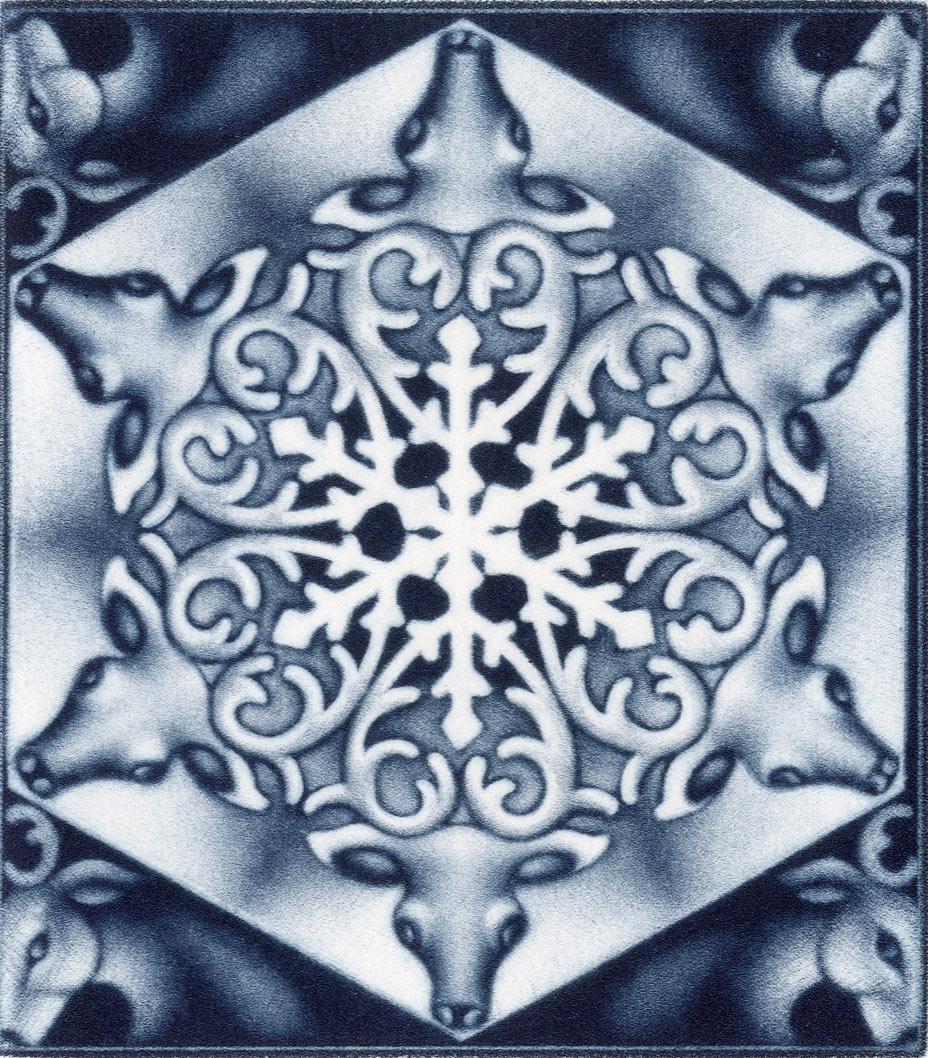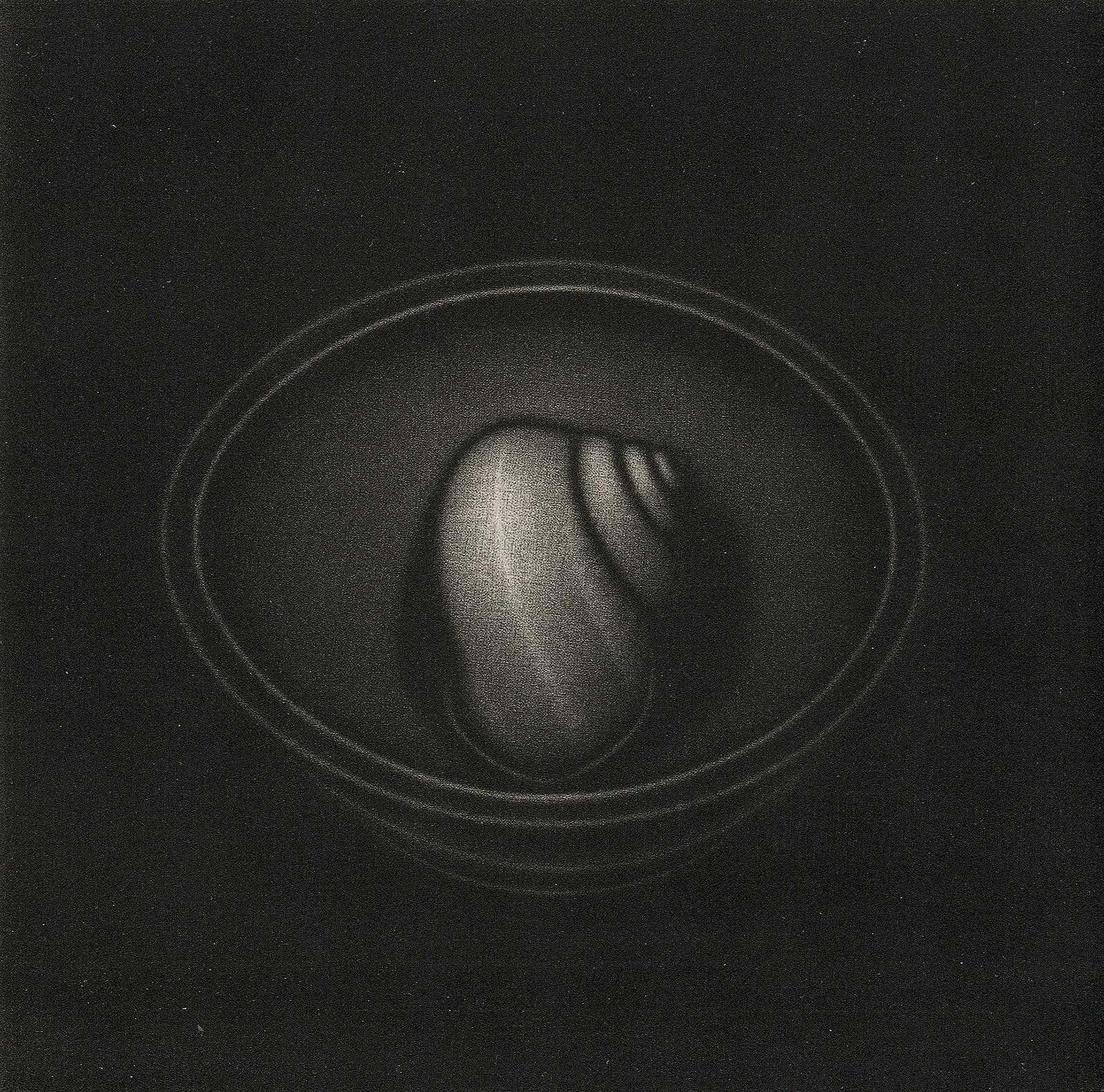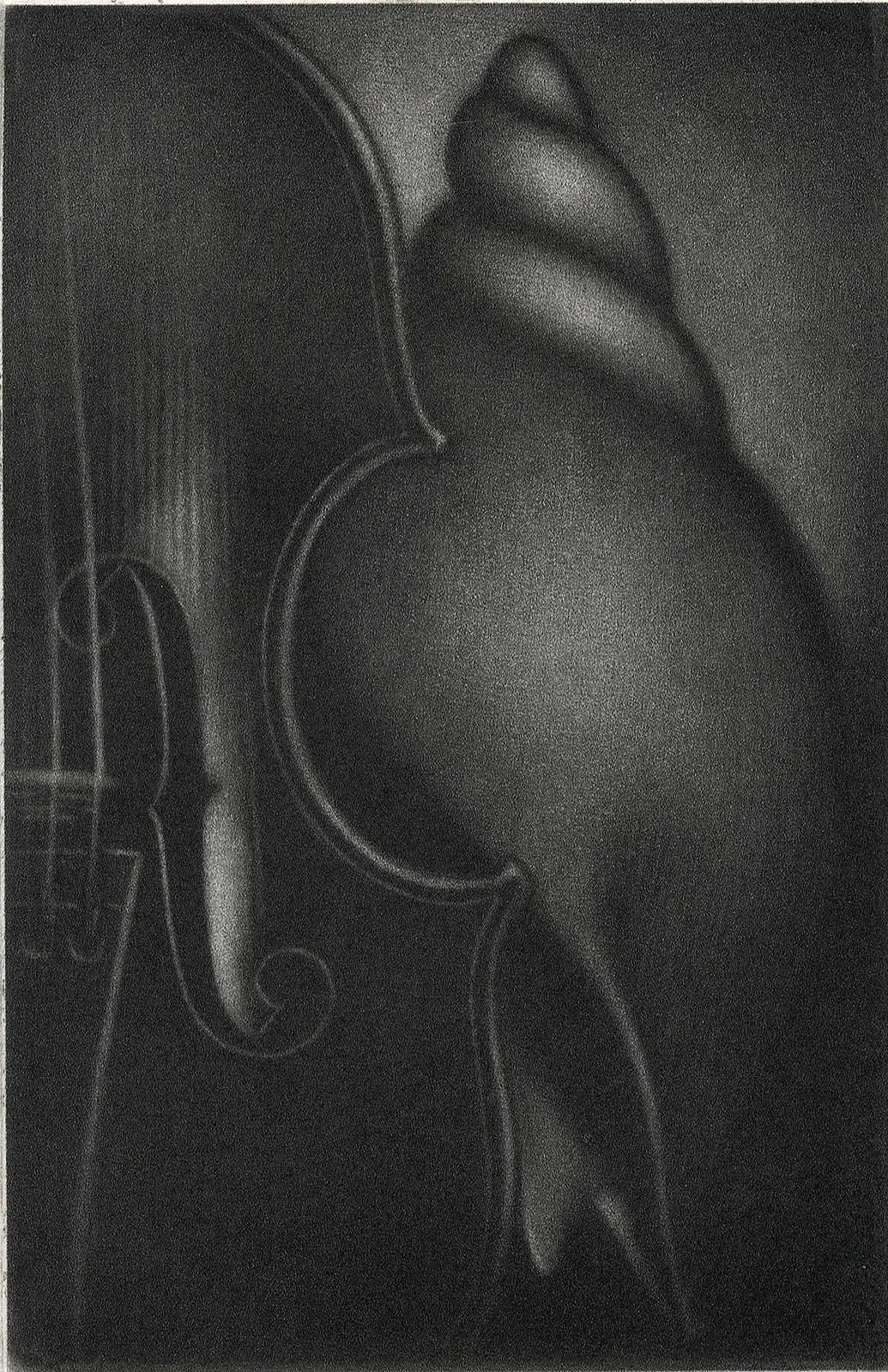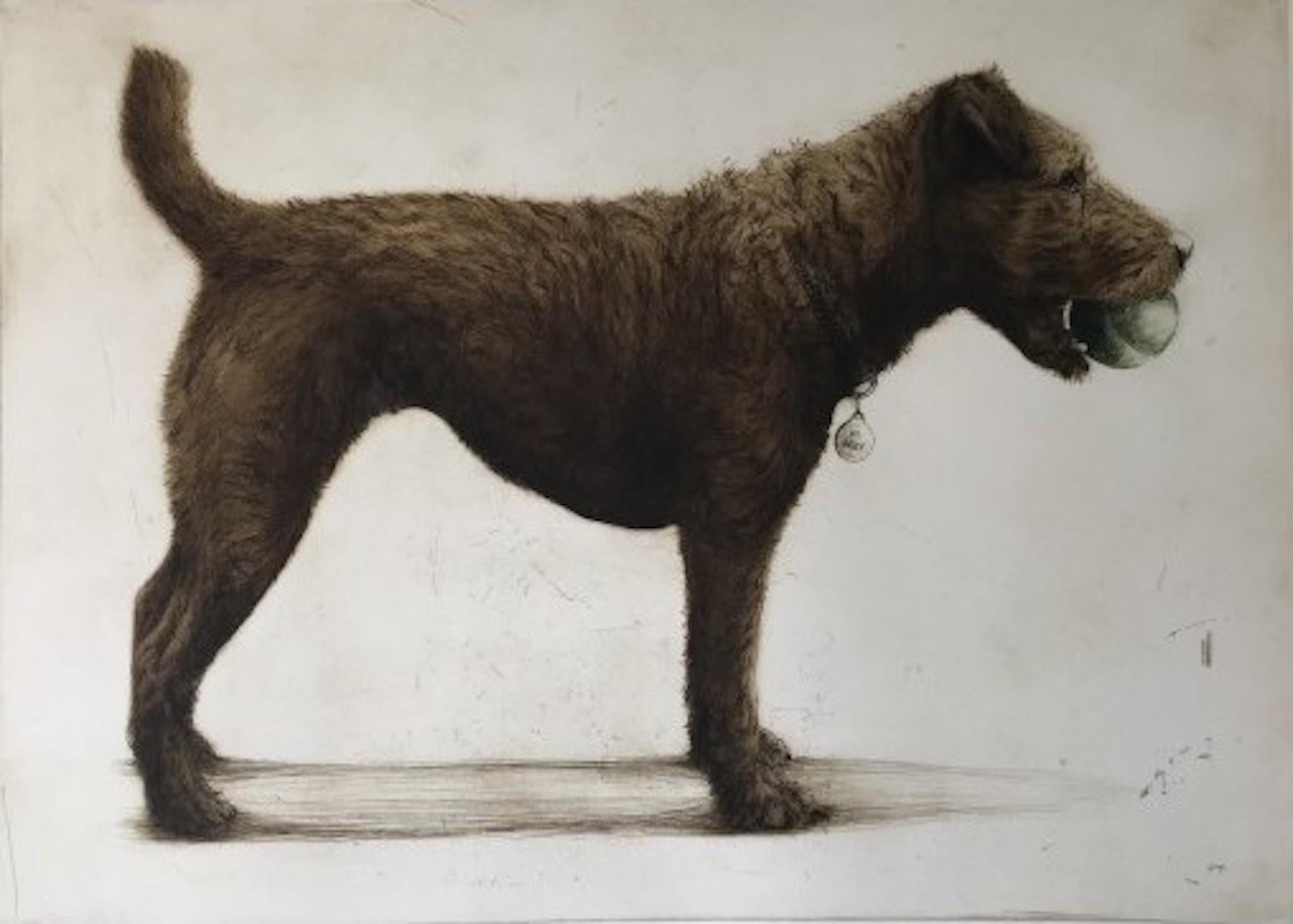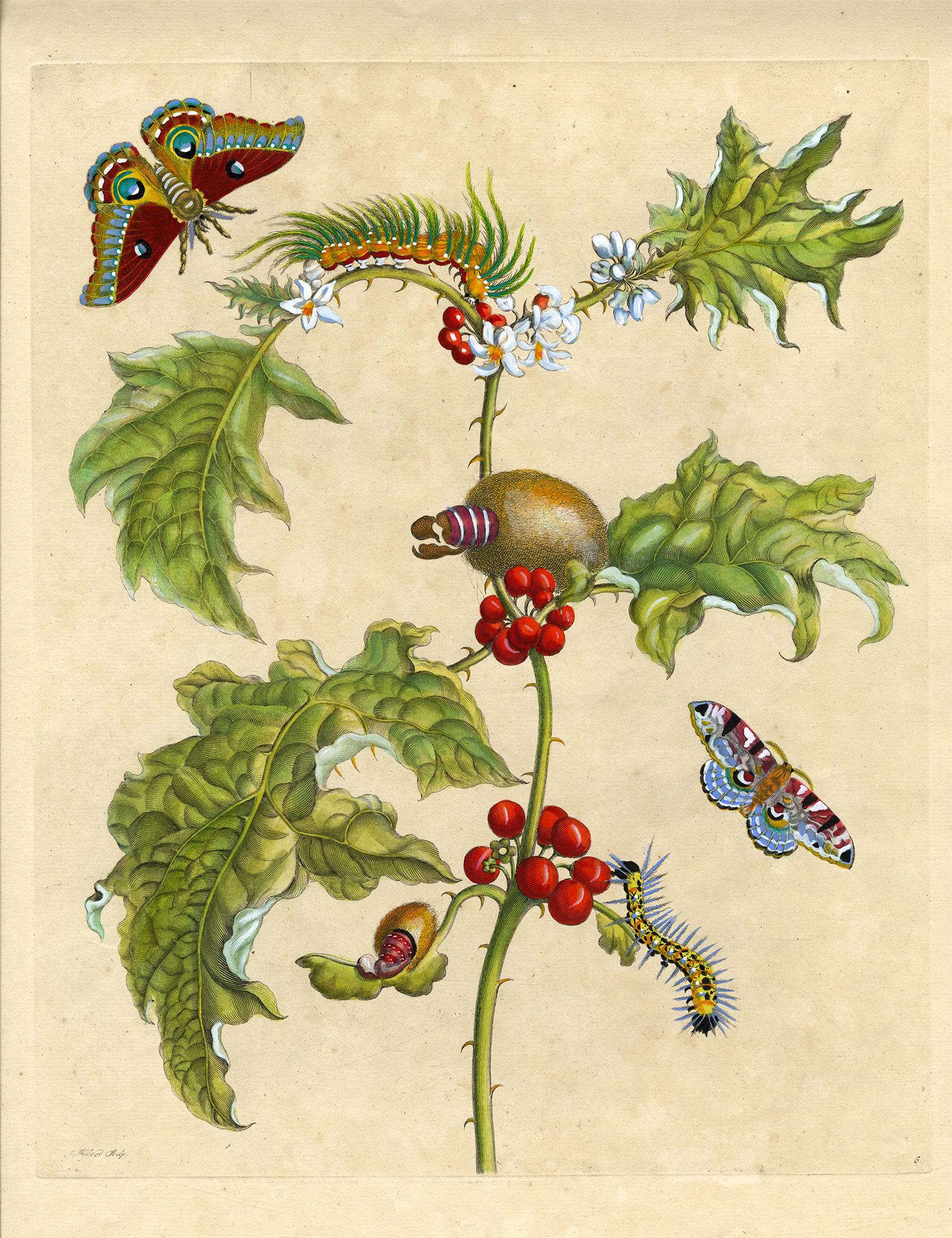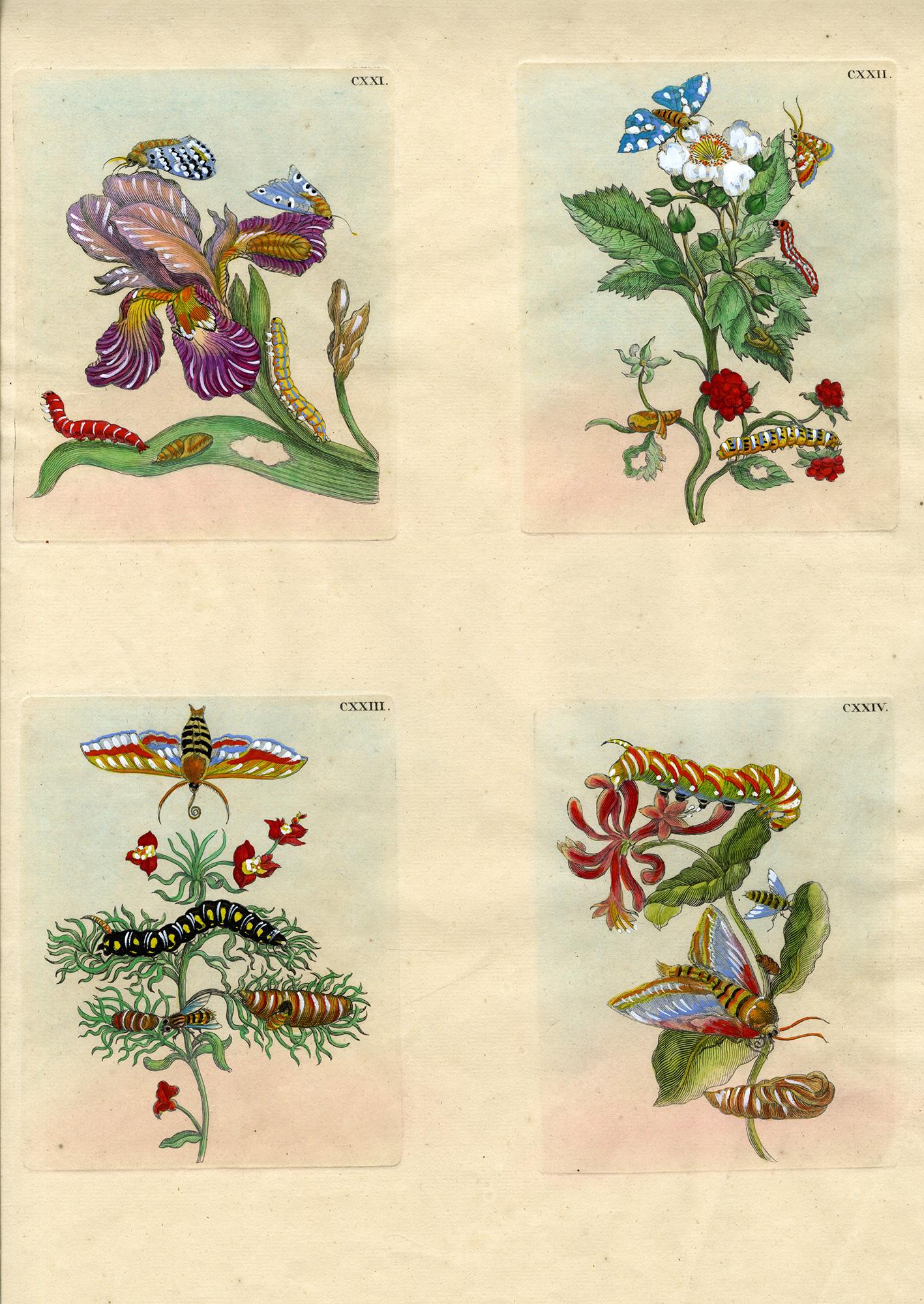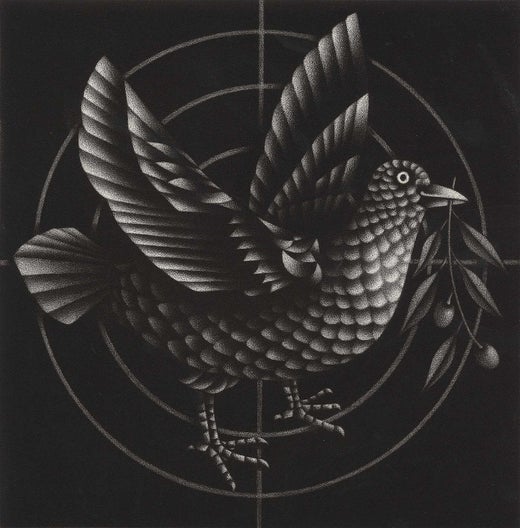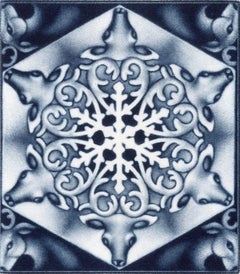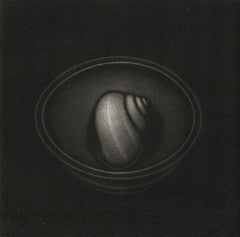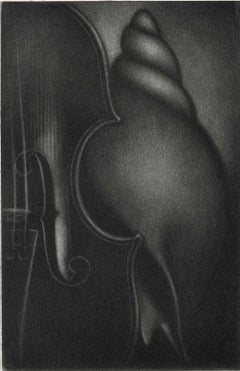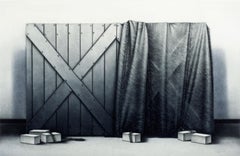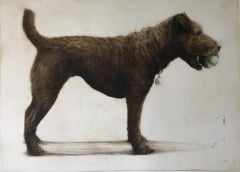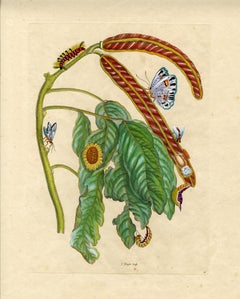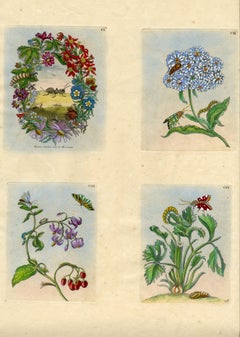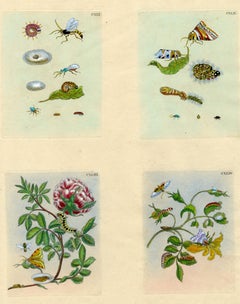Items Similar to Colombe (Dove of Peace returns to ark with olive branch in her beak)
Want more images or videos?
Request additional images or videos from the seller
1 of 5
Mario AvatiColombe (Dove of Peace returns to ark with olive branch in her beak)1971
1971
$175
$40056% Off
£133.13
£304.3156% Off
€155.68
€355.8356% Off
CA$244.75
CA$559.4256% Off
A$274.94
A$628.4456% Off
CHF 146.32
CHF 334.4556% Off
MX$3,399.78
MX$7,770.9356% Off
NOK 1,782.95
NOK 4,075.3156% Off
SEK 1,723.85
SEK 3,940.2456% Off
DKK 1,161.19
DKK 2,654.1656% Off
Shipping
Retrieving quote...The 1stDibs Promise:
Authenticity Guarantee,
Money-Back Guarantee,
24-Hour Cancellation
About the Item
"And the dove came in to him in the evening; and, lo, in her mouth was a plucked off olive leaf: so Noah knew that the waters were abated from off the earth."
Mario Avati, a master of the mezzotint process, created a suite of mezzotints in an edition of 75 which depicts ten animals as part of Noah's Ark. He presents the dove returning to the ark holding an olive branch in her beak. This symbol of peace originated with the early Christians who portrayed the act of baptism accompanied by a dove holding an olive branch in its beak and also used the image on their sepulchers.
Mario Avati (French, 1921 – 2009)
Born in Monaco of Italian parents, Avati lived in Paris for most of his life. He worked in Nice at the Ecole Nationale des Arts Decoratifs and later studied with Marc Chagall
at the Ecole des Beaux Arts. He began his professional career as a printmaker in 1947 and started using the mezzotint medium by 1950. In the late 1960s, Avati was instrumental in the contemporary development of color mezzotints. His work is represented in the permanent collections of museums throughout the world including: the Musee du Louvre, London’s Victoria and Albert Museum, the Museum of Modern Art in Tokyo, the Metropolitan Museum, the Museum of Modern Art in New York, the Chicago Art Institute, and the Philadelphia Museum of Art.
- Creator:Mario Avati (1921 - 2009, French)
- Creation Year:1971
- Dimensions:Height: 8.5 in (21.59 cm)Width: 8.5 in (21.59 cm)
- Medium:
- Movement & Style:
- Period:
- Condition:
- Gallery Location:New Orleans, LA
- Reference Number:1stDibs: LU84133482051
Mario Avati
Mario Avati along with fellow artist Marc Chagall attended the Ecole des Beaux-Arts in Paris. He began printmaking in the 1940s and later focused on mezzotint, a technique that would bring Avanti significant international recognition for his discipline. As a fellow at the Tamarind Lithography Workshop in the 1960s, he furthered his exploration of mezzotint, with the interplay of intense blackness with gradations of light that define the mezzotint process.
About the Seller
4.9
Recognized Seller
These prestigious sellers are industry leaders and represent the highest echelon for item quality and design.
Platinum Seller
Premium sellers with a 4.7+ rating and 24-hour response times
Established in 1988
1stDibs seller since 2018
796 sales on 1stDibs
Typical response time: 2 hours
Associations
International Fine Print Dealers Association
- ShippingRetrieving quote...Shipping from: New Orleans, LA
- Return Policy
Authenticity Guarantee
In the unlikely event there’s an issue with an item’s authenticity, contact us within 1 year for a full refund. DetailsMoney-Back Guarantee
If your item is not as described, is damaged in transit, or does not arrive, contact us within 7 days for a full refund. Details24-Hour Cancellation
You have a 24-hour grace period in which to reconsider your purchase, with no questions asked.Vetted Professional Sellers
Our world-class sellers must adhere to strict standards for service and quality, maintaining the integrity of our listings.Price-Match Guarantee
If you find that a seller listed the same item for a lower price elsewhere, we’ll match it.Trusted Global Delivery
Our best-in-class carrier network provides specialized shipping options worldwide, including custom delivery.More From This Seller
View AllSnow Does (Doe, a deer - a female deer)
By Carol Wax
Located in New Orleans, LA
An exclusive publication for Stone and Press Gallery, "Snow Does" was created in an edition of 100. It is FIROS #66 in the catalogue raisonne.
Carol Wax originally trained to be a classical musician at the Manhattan School of Music but fell in love with printmaking. Soon after she began engraving mezzotints she was asked by the renowned print dealer Sylvan Cole to exhibit at Associated American Artists Gallery, launching her career as a professional artist/printmaker. With the publication of her book, The Mezzotint: History and Technique, published by Abrams, 1990 and 1996, Carol added author and teacher to her credits. In the ensuing years she has expanded her repertoire of mediums beyond printmaking into other works on paper and painting.
In compositions reflecting an appreciation for antiquated machinery and vintage textiles, Wax creates imagery that, in her own words, “… speaks to an inner life perceived in inanimate objects.” She uses stylization and imagination to reinvent subjects, transforming an ordinary typewriter into a monumental icon...
Category
1990s American Modern Still-life Prints
Materials
Mezzotint
Snail in a Bowl (Artist Proof inscribed to Fritz Eichenberg)
Located in New Orleans, LA
Leonard Merchant's mezzotint, "Snail in Cup" is inscribed for fellow artist, Fritz Eichenberg.
While a student at the Central School for Arts and Crafts in London, a young Leonard Marchant found an engraving rocker in a cupboard and proceeded to turn himself into a master of the painstaking art of mezzotinting.
Marchant, who has died in Shrewsbury aged 70, grew up in Simonstown, the Royal Navy's enclave in South Africa. Though his first job was as a parliamentary messenger, he taught himself to paint and, aged 19, was given a one-man show in Cape Town. Fired by this success, he left for England to study painting and, he claimed, to escape the stifling home atmosphere created by his Catholic mother and aunts. (His father was killed in the second world war.) Without contacts in London, he phoned Jacob Epstein, whose recommendation resulted in a grant to study briefly at the Central School. It was later, when studying full-time at the Central, that he saw the mezzotints of the Japanese master, Yozo Hamaguchi, in a London gallery. He was hooked.
Creating a mezzotint is tedious in the extreme. The copper plate must first be prepared with a "rocker" which roughens the surface. A plate may be "rocked" 30 or 40 times. The rough texture is then reduced with a burnisher and a scraper, allowing the print a range of tones from velvety black through the greys to white. Marchant's plates could be months in the making. But the technical demands were the least of his worries. In its 18th- and 19th-century heyday, mezzotint was solely a reproductive medium, for copying masters such as Reynolds and Turner. The development of photography rendered it unfashionable, and by the 1960s the technique, known as la manière anglaise, was a bygone medium.
Marchant, by now a teacher in printmaking at the Central, began to create original mezzotints with a colleague, Radavan Kraguly. A perfectionist, he seemed to revel in the straitjacket procedure. Perhaps it was the metaphor of bringing darkness out of light that appealed to this straight-talking, sometimes sombre, man, who would suddenly relax and light up like a gleaming hue on one of his prints. His work was of squares and triangles with the occasional cat, black and ominous, and carefully arranged still lifes, featuring plants, a seed pod, a pot he might have bought at auction to celebrate the sale of a print.
There were one-man shows, notably at the Bankside Gallery. He sold well at the Royal Academy summer exhibition, was a Florence Biennale prizewinner, spent a fellowship year at the British School in Rome, and was elected a Fellow of the Royal Society of Painter-Printmakers.
But making mezzotints was not a paying job. Marchant and his South African wife...
Category
1980s Modern Animal Prints
Materials
Mezzotint
$100 Sale Price
45% Off
Violin et Coquille (violin and shell / inscribed Happy New Year 2000)
By Laurent Schkolnyk
Located in New Orleans, LA
This black and white mezzotint of a shell next to a violin is an artist proof that was inscribed Happy New Year 2000 and signed by the artist. The regular e...
Category
1990s American Modern Still-life Prints
Materials
Mezzotint
In the Silence of Passing Years
By Marc Balakjian
Located in New Orleans, LA
This image is an artist proof XII / XII. The artist's subject matter was enigmatic: a recurring theme was that of anonymous packages tied with knots of rope; sometimes there are prison bars...
Category
Late 20th Century Contemporary Still-life Prints
Materials
Mezzotint
$350 Sale Price
30% Off
Lillies and Bowls (still life of flowers and colorful bowls)
Located in New Orleans, LA
The moon, bowls, lillies and birds are featured in this 2002 mezzotint. It is #17 from an edition of 75 and is signed, titled, dated and edition by hand by this Korean artist born i...
Category
Late 20th Century Contemporary Still-life Prints
Materials
Mezzotint
$140 Sale Price
36% Off
Apple Peeler II (a kitchen tool interpreted by paintings of Yves Tanguy)
By Carol Wax
Located in New Orleans, LA
Carol Wax's mezzotint, "Apple Peeler II", shows the simple tool influenced in part by Yves Tanguy. It was created in 1992 an edition of 50. This image is...
Category
1980s Contemporary Portrait Prints
Materials
Mezzotint
$160 Sale Price
20% Off
You May Also Like
Izzy with her Ball, Dog Art, Affordable Art, Contemporary Animal Art Print
Located in Deddington, GB
Izzy, a charming characterful terrier stands alert, holding her ball in her mouth. Colour etching hand made and printed by the artist.
Helen Fay's art for sale online and in our gall...
Category
2010s Contemporary Animal Prints
Materials
Paper, Drypoint, Etching
Icecream Bean plant..., plate no. 58, Metamorphosis Insectorum Surinamensium
By Maria Sibylla Merian
Located in Middletown, NY
Metamorphosis Insectorum Surinamensium, Plate No. 58; Ice Cream Bean Plant, Cloudless Sulphur Butterfly and Caterpillar with Mot...
Category
Early 18th Century Naturalistic Still-life Prints
Materials
Watercolor, Engraving
4 plates from The Wondrous Transformation of Caterpillars & their Strange Diet..
By Maria Sibylla Merian
Located in Middletown, NY
Four plates from The Wondrous Transformation of Caterpillars and their Strange Diet of Flowers. “Wolfsmelk Rupsen;" “Wolfsmilch, Raupe und Schmetterling" Amsterdam: J F Bernard, 1730. Each an engraving with hand coloring in watercolor and gouache printed on one sheet of watermarked Honig cream laid paper, each measures 6 1/4 x 5 inches (157 x 121 mm), sheet measures 20 5/8 x 14 inches (522 x 355 mm), full margins. With handling creases in the lower right sheet quadrant, as well as minor, loose cockling, otherwise in very good condition. The colors are superb with exceptionally fresh and bright saturation. Engraved between 1679 and 1683, printed 1730. Plates included: CI; CII; CIII & CIV.
MARIA SIBYLLA MERIAN was one of the most highly respected entomologists of the 17th century, and remains today one of the field's most significant figures. A German-born naturalist and scientific illustrator, she reared herself on the study of caterpillars, and made tremendous contributions to the knowledge of the life cycles of numerous species. Until her detailed and careful study of the process of metamorphosis it was thought that insects were "born of mud," through spontaneous generation.
Trained as a miniature painter by her stepfather, she published her first book of illustrations in 1675, at the age of 28. In 1679, Merian published the first volume of the two-volume series on caterpillars, The Wondrous Transformation of Caterpillars and their Strange Diet of Flowers; the second volume followed in 1683. Each volume contained 50 plates that she engraved and etched. In 1699, Merian traveled to Dutch Guiana...
Category
Early 18th Century Naturalistic Still-life Prints
Materials
Engraving, Watercolor
4 plates from The Wondrous Transformation of Caterpillars & their Strange Diet..
By Maria Sibylla Merian
Located in Middletown, NY
Four plates from The Wondrous Transformation of Caterpillars and their Strange Diet of Flowers. “Wolfsmelk Rupsen;" “Wolfsmilch, Raupe und Schmetterling" Amsterdam: JF Bernard, 1730. Each an engraving with hand coloring in watercolor and gouache printed on one sheet of watermarked Honig cream laid paper, each measures 6 1/4 x 5 inches (157 x 121 mm), sheet measures 20 5/8 x 14 inches (522 x 355 mm), full margins. With handling creases in the lower right sheet quadrant, as well as minor, loose cockling, otherwise in very good condition. The colors are superb with exceptionally fresh and bright saturation. Engraved between 1679 and 1683, printed 1730. Plates included: CXLI, CXLII, CXIII & CXLIV.
MARIA SIBYLLA MERIAN was one of the most highly respected entomologists of the 17th century, and remains today one of the field's most significant figures. A German-born naturalist and scientific illustrator, she reared herself on the study of caterpillars, and made tremendous contributions to the knowledge of the life cycles of numerous species. Until her detailed and careful study of the process of metamorphosis it was thought that insects were "born of mud," through spontaneous generation.
Trained as a miniature painter by her stepfather, she published her first book of illustrations in 1675, at the age of 28. In 1679, Merian published the first volume of the two-volume series on caterpillars, The Wondrous Transformation of Caterpillars and their Strange Diet of Flowers; the second volume followed in 1683. Each volume contained 50 plates that she engraved and etched. In 1699, Merian traveled to Dutch Guiana...
Category
Early 18th Century Naturalistic Still-life Prints
Materials
Watercolor, Engraving
3 plates from The Wondrous Transformation of Caterpillars & their Strange Diet..
By Maria Sibylla Merian
Located in Middletown, NY
Three plates from The Wondrous Transformation of Caterpillars and their Strange Diet of Flowers. “Wolfsmelk Rupsen;" “Wolfsmilch, Raupe und Schmetterling" Amsterdam: J F Bernard, 1730. Each an engraving with hand coloring in watercolor and gouache printed on one sheet of watermarked Honig cream laid paper, each measures 6 1/4 x 5 inches (157 x 121 mm), sheet measures 20 5/8 x 14 inches (522 x 355 mm), full margins. With handling creases in the lower right sheet quadrant, as well as minor, loose cockling, otherwise in very good condition. The colors are superb with exceptionally fresh and bright saturation. Engraved between 1679 and 1683, printed 1730. Plates included: XLVIII; XLIX & L.
MARIA SIBYLLA MERIAN was one of the most highly respected entomologists of the 17th century, and remains today one of the field's most significant figures. A German-born naturalist and scientific illustrator, she reared herself on the study of caterpillars, and made tremendous contributions to the knowledge of the life cycles of numerous species. Until her detailed and careful study of the process of metamorphosis it was thought that insects were "born of mud," through spontaneous generation.
Trained as a miniature painter by her stepfather, she published her first book of illustrations in 1675, at the age of 28. In 1679, Merian published the first volume of the two-volume series on caterpillars, The Wondrous Transformation of Caterpillars and their Strange Diet of Flowers; the second volume followed in 1683. Each volume contained 50 plates that she engraved and etched. In 1699, Merian traveled to Dutch Guiana...
Category
Early 18th Century Naturalistic Still-life Prints
Materials
Watercolor, Engraving
Tree with moth, caterpillar..., Plate 39, Metamorphosis Insectorum Surinamensium
By Maria Sibylla Merian
Located in Middletown, NY
Metamorphosis Insectorum Surinamensium, Plate No. 39; Unidentified tree with moth, caterpillar and pupa.
The Netherlands: 1705....
Category
Early 18th Century Naturalistic Still-life Prints
Materials
Watercolor, Engraving
